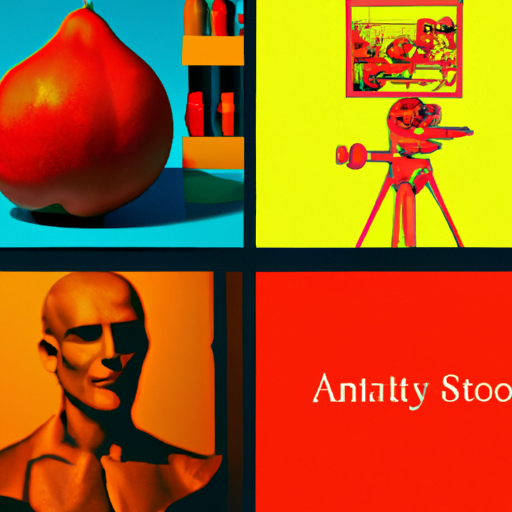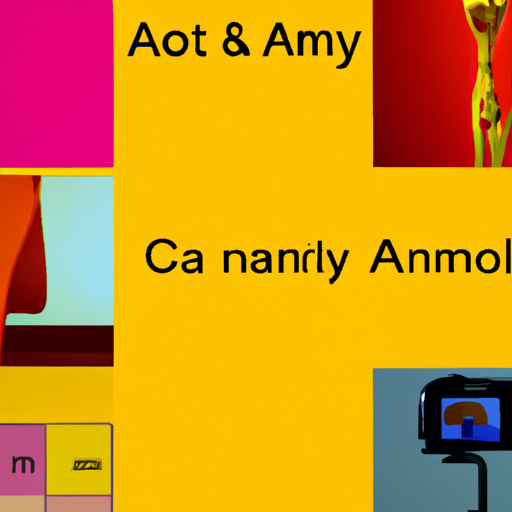
-
Table of Contents
- Anatomy of a Strong Visual Composition
- The Importance of Visual Composition
- The Principles of Visual Composition
- 1. Balance
- 2. Rule of Thirds
- 3. Leading Lines
- 4. Framing
- 5. Contrast
- The Elements of Visual Composition
- 1. Line
- 2. Shape
- 3. Color
- 4. Texture
- 5. Space
- Case Studies and Examples
- Case Study 1: “The Starry Night” by Vincent van Gogh
- Case Study 2: National Geographic Photographs
- Key Takeaways
Anatomy of a Strong Visual Composition

Visual composition is a fundamental aspect of any form of visual art, whether it be photography, painting, or graphic design. It refers to the arrangement and organization of visual elements within a frame or space to create a visually pleasing and impactful image. Understanding the principles and elements of visual composition is crucial for creating compelling and engaging visuals. In this article, we will explore the anatomy of a strong visual composition, discussing the key principles and elements that contribute to its effectiveness.
The Importance of Visual Composition
Visual composition plays a vital role in capturing the viewer’s attention and conveying the intended message or story. It helps guide the viewer’s eye through the image, emphasizing certain elements and creating a sense of balance and harmony. A well-composed image can evoke emotions, tell a story, and leave a lasting impression on the viewer.
The Principles of Visual Composition
There are several principles that guide the creation of a strong visual composition. These principles provide a framework for arranging the visual elements in a way that is visually pleasing and effective. Let’s explore some of the key principles:
1. Balance
Balance refers to the distribution of visual weight within an image. It can be achieved through symmetrical or asymmetrical arrangements. Symmetrical balance occurs when the visual elements are evenly distributed on both sides of the image, creating a sense of stability and harmony. Asymmetrical balance, on the other hand, involves the distribution of visual weight in a way that is not symmetrical but still achieves a sense of balance. It can be achieved through the careful placement of different-sized elements or through the use of color and texture.
2. Rule of Thirds
The rule of thirds is a widely used guideline in visual composition. It involves dividing the image into a grid of nine equal parts by drawing two horizontal and two vertical lines. The points where these lines intersect are known as the “power points.” Placing the main subject or points of interest along these power points or along the lines creates a more visually appealing and balanced composition. This technique helps create a sense of tension and dynamism in the image.
3. Leading Lines
Leading lines are lines within an image that lead the viewer’s eye towards the main subject or points of interest. They can be actual lines, such as roads, rivers, or fences, or implied lines created by the arrangement of other elements. Leading lines help create depth, guide the viewer’s eye through the image, and add a sense of movement and direction.
4. Framing
Framing involves using elements within the image to create a frame around the main subject. This can be achieved by using natural elements like trees or archways or by using man-made elements like windows or doorways. Framing helps draw attention to the main subject, adds depth to the image, and creates a sense of context and perspective.
5. Contrast
Contrast refers to the difference between light and dark areas in an image. It can also refer to the difference in color, texture, or size between different elements. Contrast helps create visual interest, emphasize certain elements, and add depth and dimension to the image. It can be achieved through the use of light and shadow, complementary colors, or by placing elements of different sizes or textures next to each other.
The Elements of Visual Composition
In addition to the principles, there are several key elements that contribute to a strong visual composition. These elements help create a sense of unity, balance, and harmony within the image. Let’s explore some of the key elements:
1. Line
Line is one of the most basic elements of visual composition. It can be straight, curved, diagonal, or implied. Lines help create a sense of movement, guide the viewer’s eye, and add structure and rhythm to the image. They can be used to divide the image into different sections or to connect different elements.
2. Shape
Shape refers to the two-dimensional area created by the boundaries of an object or element. Shapes can be geometric, such as squares, circles, or triangles, or organic, such as leaves or clouds. They help create structure and form within the image and can be used to convey different emotions or meanings.
3. Color
Color is a powerful element that can evoke emotions, set the mood, and create visual interest. It can be used to create contrast, emphasize certain elements, or convey a specific message. Understanding color theory and the relationships between different colors is crucial for creating a visually pleasing and harmonious composition.
4. Texture
Texture refers to the surface quality of an object or element. It can be smooth, rough, soft, or hard. Texture adds depth and tactile quality to the image, making it more visually interesting and engaging. It can be captured through lighting, composition, or post-processing techniques.
5. Space
Space refers to the area within and around the objects or elements in the image. It can be positive or negative. Positive space refers to the main subject or objects, while negative space refers to the empty or background areas. The proper use of space helps create a sense of balance, depth, and perspective within the image.
Case Studies and Examples
Let’s take a look at some case studies and examples that demonstrate the effective use of visual composition:
Case Study 1: “The Starry Night” by Vincent van Gogh
“The Starry Night” is a famous painting by Vincent van Gogh that demonstrates the effective use of visual composition. The painting uses a combination of curved and diagonal lines to create a sense of movement and energy. The use of contrasting colors, such as the vibrant blues and yellows, adds visual interest and depth to the image. The placement of the moon and the swirling sky along the rule of thirds lines creates a balanced and visually appealing composition.
Case Study 2: National Geographic Photographs
National Geographic is known for its stunning photographs that capture the beauty of the natural world. These photographs often demonstrate the effective use of visual composition. For example, a photograph of a lion in the African savannah may use leading lines created by the tall grass to guide the viewer’s eye towards the main subject. The use of contrasting colors, such as the golden hues of the grass against the lion’s fur, adds visual interest and depth to the image.
Key Takeaways
Understanding the principles and elements of visual composition is crucial for creating compelling and impactful visuals. Here are the key takeaways from this article:
- Visual composition plays a vital role in capturing the viewer’s attention and conveying the intended message or story.
- The principles of
